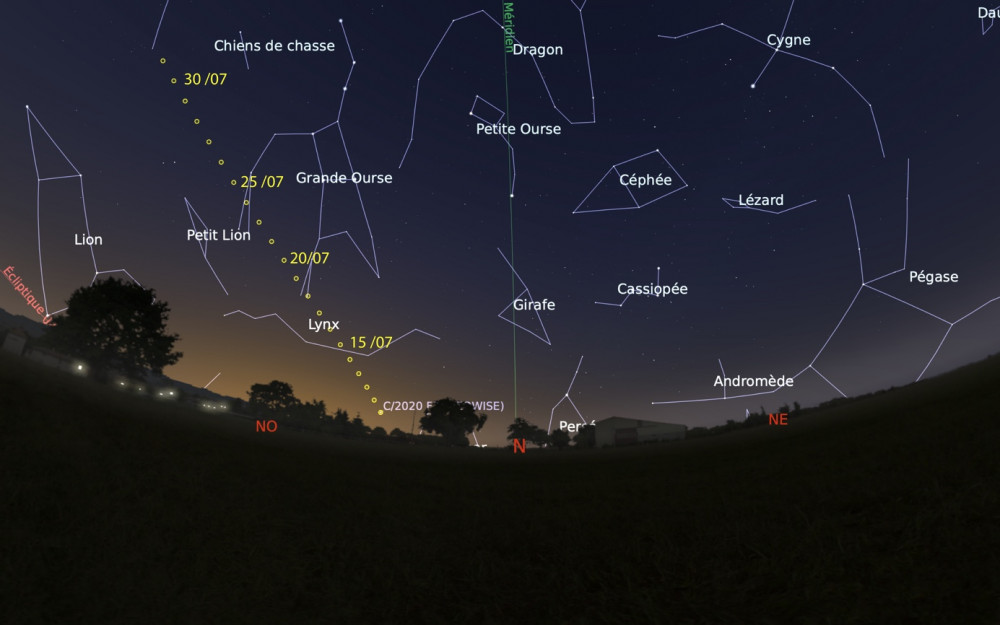
Detected on 27 March 2020 by NASA’s WISE space telescope, whose name it now bears, comet C/2020 F3 (NEOWISE) is the pleasant surprise in the sky of July 2020. It has not been seen in the metropolitan sky since Pan-Starrs in 2013 and, just as vividly, since Hale-Bopp in 1997.
C/2020 F3 (NEOWISE) passed as close to the Sun as possible on July 3, without disintegrating. After this successful passage through perihelion, it resumes its course towards the depths of the Solar System, which it will reach in 3 400 years... 81 billion kilometres away.
This month of July is therefore the last opportunity to admire its brilliance (of a magnitude less than 1).
Neowise is currently visible in the night between four and five in the morning, heading northeast, in the constellation of the Coach, about ten degrees above the horizon. It is moving in the direction of the Big Dipper.

On Thursday 23rd July, it should be at the closest point to the Earth ; it will then be at a distance of more than 104 million kilometres, but with greatly diminished luminosity.




